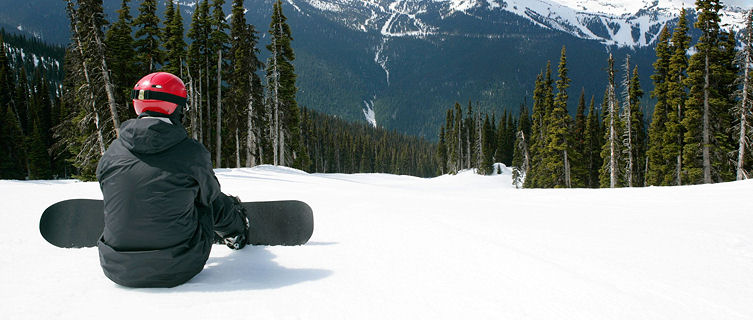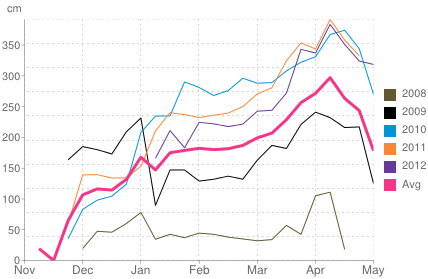
Whistler Blackcomb ski resort
Whistler Blackcomb ski resort is consistently ranked the number one resort in North America, and it's easy to see why.
Whistler has the largest skiable area and the second-biggest lift-served vertical drop on the continent, topped-off with an enviable snow record. In addition, an eclectic mix of 5-star hotels and budget hostels grace the pedestrianised base at the foot of the slopes, attracting more than two million visitors each winter from all walks of life. The resort is also equally popular in the summer months, helping to build a year round community that distinguish it favourably from the purpose-built resorts dotted throughout Europe.
The skiing here is spread over two mountains: Whistler and Blackcomb, and there are three neatly arranged pedestrianised bases: the Upper Village (at Blackcomb), Whistler Village and Creekside.
In summer 2016 Whistler was sold for a reputed $1 billion to Vail Resorts, an ever-growing, multi-resort owning, Colorado-based group. With the organisation’s reputation for big expansion and large investment, it’s likely there will be some big changes to North America’s favourite resort; keep your eye on Whistler.
Whistler Blackcomb is situated in the Coast Mountains in Canada's westernmost province, British Columbia. The resort is 125km (78 miles) north of Vancouver, just outside Garibaldi Provincial Park.
On the slopes
Whistler Mountain has the edge over Blackcomb when it comes to beginners' terrain. There's a good learners' area under the Olympic chairlift by the gondola mid-station, while higher up, the Emerald Express chairlift serves a nice range of wide, green runs.
Intermediates have an enormous choice of cruisy tree-lined runs and more challenging powder bowls (55% of the ski area falls into this middle classification). The tree skiing is out of this world too: there are a number of marked gladed trails and plenty of widely spaced trees between runs.
Meanwhile, more than a quarter of the terrain is graded advanced/expert. Several heart-stopping drop-ins lead to steep chutes, bowls and mogul fields. And don't miss Blackcomb's impressive Couloir Extreme.
Freestyle skiers and snowboarders will delight in the five terrain parks in the resort that are spread between the mountains. These cater for all levels, so everyone can have a go.
Whistler has an efficient, modern lift system; although queues at popular lifts tend to build up quickly over holiday periods.
The two mountains are connected at altitude by the remarkable Peak 2 Peak gondola, which travels 4.4km (2.7 miles) in 11 minutes, carrying passengers up to 436m (1,430ft) above the valley floor. This is a world record for the highest point above the ground that a passenger lift travels, as is the 3,024m (9,921ft) distance between two of the supports to cross the valley. For the full effect, some cabins have glass floors enabling passengers to look straight down.
The main ski season in Whistler Blackcomb runs from November to late-May (only one mountain usually remains open from the end of April), with summer glacier skiing on Blackcomb from mid-June until mid-July.
Average snow depth in Whistler Blackcomb

Historical snow depth in Whistler Blackcomb
Do you have any Feedback about this page?
© 2026 Columbus Travel Media Ltd. All rights reserved. No part of this site may be reproduced without our written permission, click here for information on Columbus Content Solutions.








 You know where
You know where